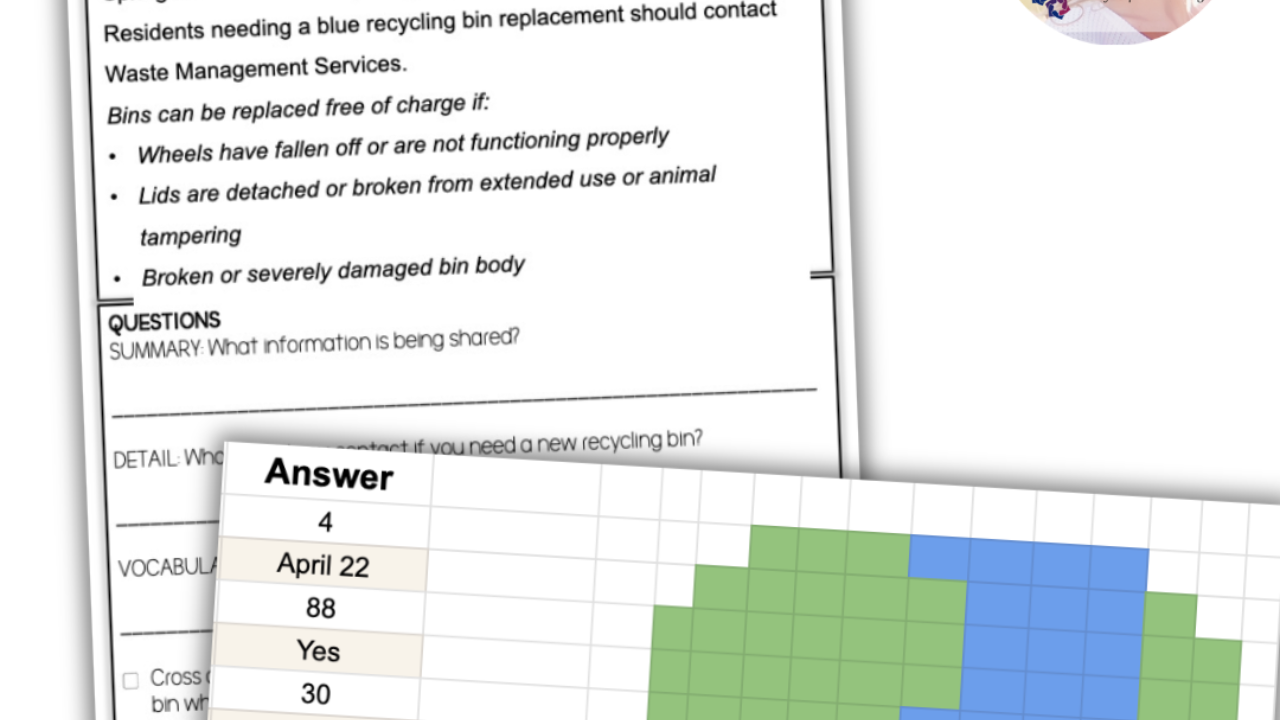How to Teach Meal Planning
Jan 09, 2021
Our next topic in the Consumer Math Blog Series is about how to teach Meal Prep. Read more about why and how you can teach Meal Prep using my Meal Prep Lesson Unit (click here to get your copy).
Purpose of Teaching Meal Prep
While this seems more like a Family and Consumer Science topic, meal prepping has a lot to do with consumer math. Since it pairs so well with both Budgeting, Food Budgets, and Comparison shopping, it's a great topic to include in your curriculum.
*I use the terms Meal Planning and Meal Prepping interchangeably throughout the lesson.
Key-Must-Teach Concepts
To prep is to plan! Prepping includes deciding what meals you are going to need to eat, where you are going to eat, what you are going to eat, and then the ingredients you need to make those meals (and this includes the all important quantity variable!).
Win-Win! Cooking a meal at home is a true win-win as the meal is usually healthier and cheaper to make than to consume at a restaurant. What isn’t there to love about making healthier choices and spending less money?!?
Meal Planning Lesson Unit
Lesson Objective
Identify three positive results of meal prepping.
Lesson Unit Break Down
Day 1- As you could guess, use the visual flow chart to introduce the topic and how it relates to the other topics you’ve learned about in class. Throw out the brain teaser to get the mind working, and then move to the reading passage. See my suggestion below (Reading Passage Option) for how to use the reading passage in a new/different way, then check for understanding using the T/F questions and the writing prompt.
Day 2- You can delve into the Notes on Day 1 or you can cover them in Day 2, it’s up to you and your time schedule. I prefer to save them for Day 2 because I feel that they compliment the Parts worksheet so nicely as the content moves from general ideas to more specific information and examples.
Day 3- Day 3 offers a level of student choice as the practice for the day includes a Choice Board. Students will choose 1 from each column to answer on a separate sheet of paper. Topics move from basic to more critical thinking (top to bottom) and cover a range of meal prep/meal planning areas (right to left).
Day 4- The lesson ends today with a review using the task cards (see my idea below) and the assessment. As always, end with the word search (which is great for keeping the class quiet as others finish the assessment) and the functional math review (because you can never have too much of this kind of review).
Reading Passage Option
Consider having the students answer the T/F questions before the reading (not graded), then have students review their answers and adjust AFTER the reading. It may be advantageous to give students time to do silent reading before you read it aloud as a class.
Meal Planning Lesson Unit
Listen and Learn
A Listen & Learn is a short, 5 sentence PowerPoint/Google presentation that introduces the topic using visuals and audio. Ideal for non-readers! Read about what they are and how they might be right for your classroom here.
Task Card Idea
Meal Prep is a great time to use the task card game- Keeping Secrets! Place all cards in a large manilla envelope with 1 dry erase marker, divide up class into small groups (3-4 ideally) and then give each group a packet. Mark the right answer with the dry erase and then put all the cards back in the envelope. The key is to work quietly, so others don’t overhear. After a set amount of time has passed, have the groups return the envelope to you. Check the answers and the team with the most right answers wins!
Tip- Copy 1 set of task cards for each small group and make sure they are laminated!
Further Practice Idea
Decide on a class snack that you can make in the classroom without lots of appliances (such as trail mix) and then go out to a local grocery store. Find the cost of purchasing the pre-made trail mix and then buy the ingredients and make it in your classroom. I think your students will find that they can make a lot more of the snack with the ingredients they buy and it is probably healthier (less fat, salt, oil, etc) because it’s made fresh!
Meal Planning Lesson Unit
Ultimate Goal of the Lesson Unit
The goal of this lesson is to get students to start thinking ahead for the most predictable human behavior- hunger! Everyone needs to eat and they need to eat every day, so we can predict that we will need to eat and can narrow it down to what we want to eat. If students can see that being a little proactive will save them calories and money, then you’ve won!
May I Also Suggest Teaching
Like I mentioned above, Meal Prep lessons go hand in hand with Budget, Food Budget, and Comparison Shopping concepts, so considering including those in your scope and sequence.
















